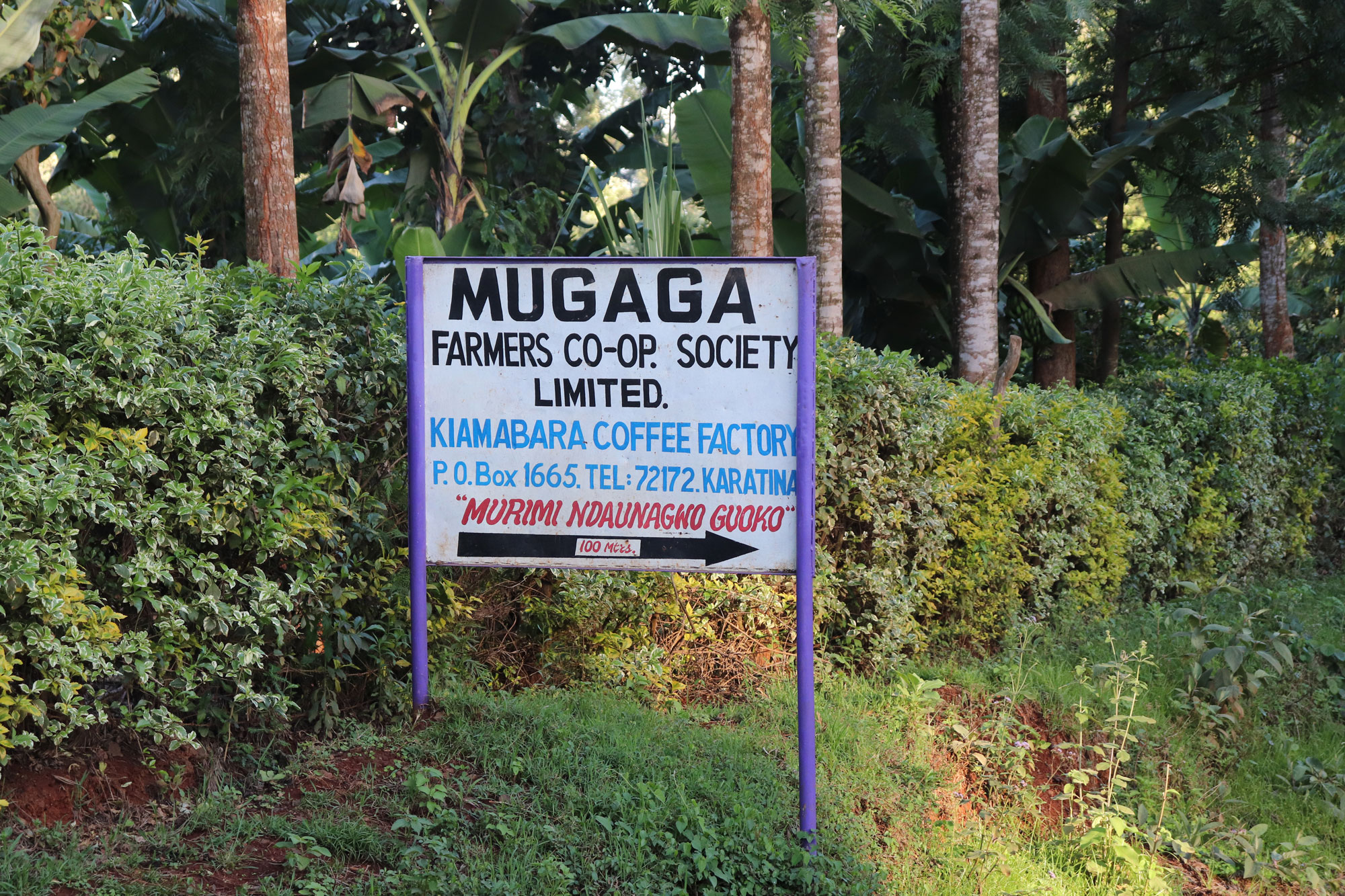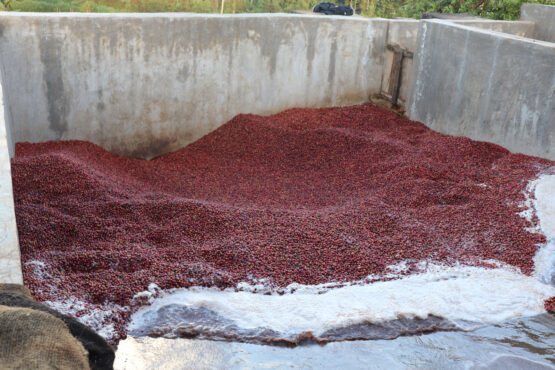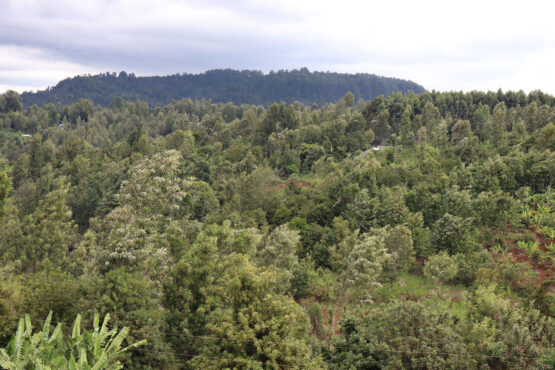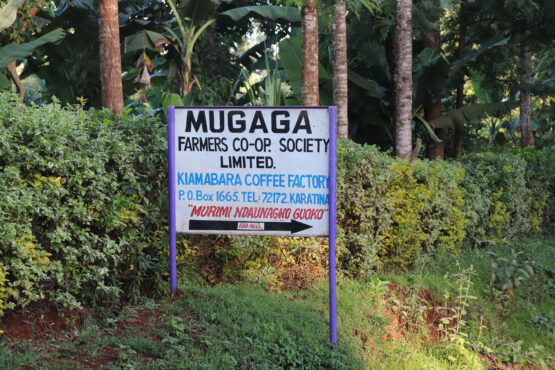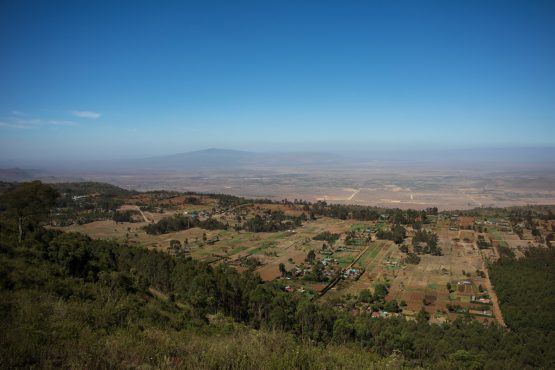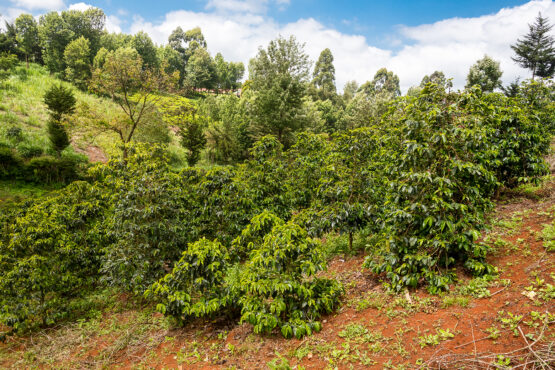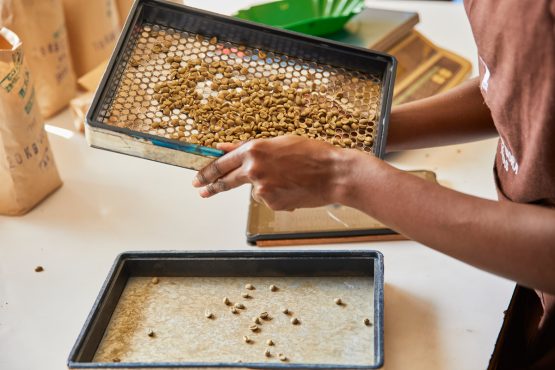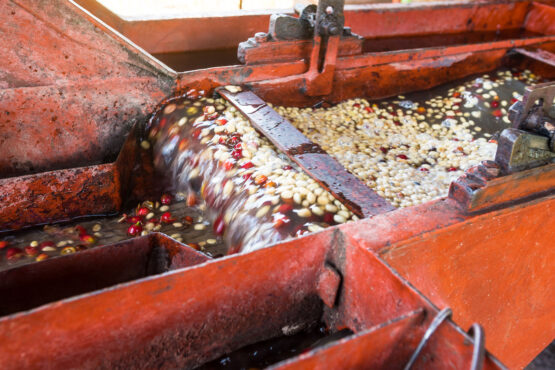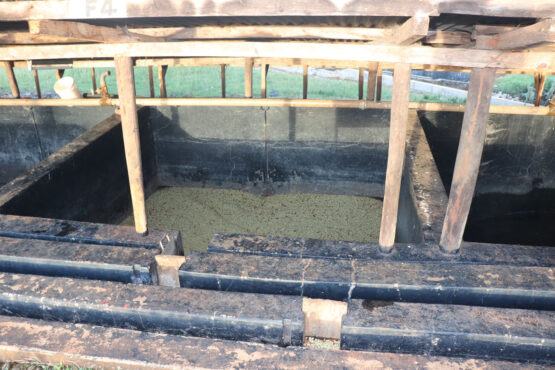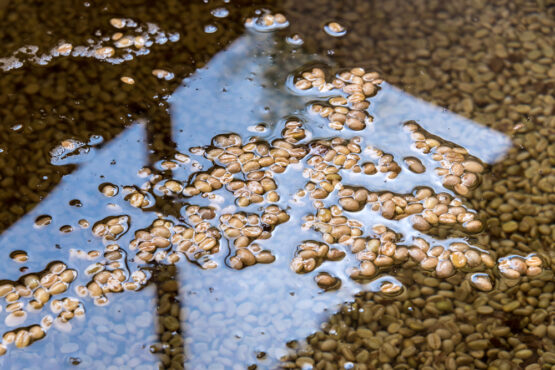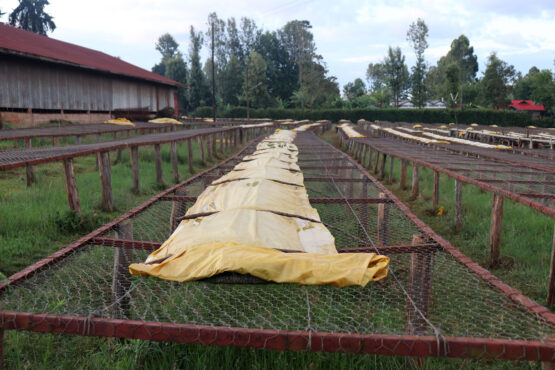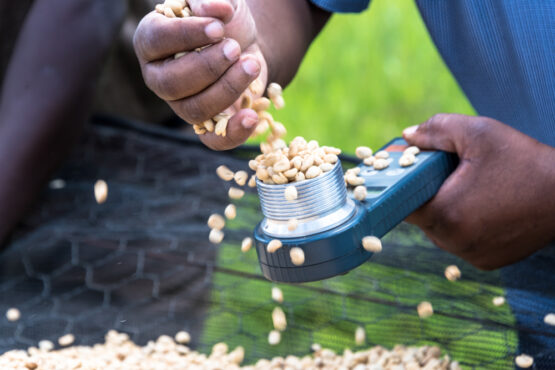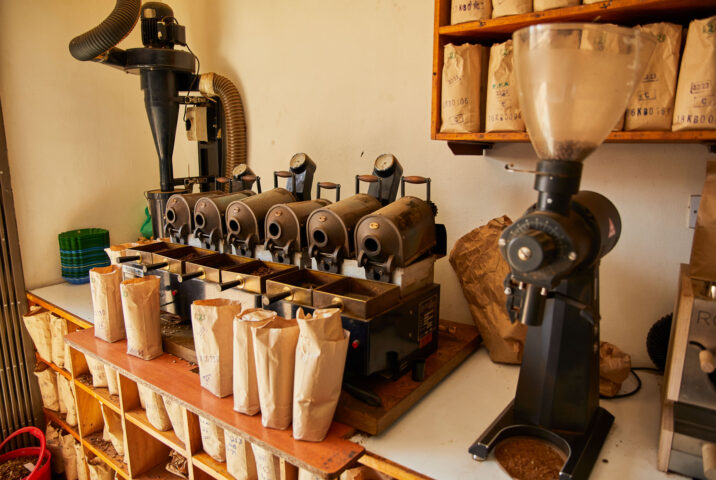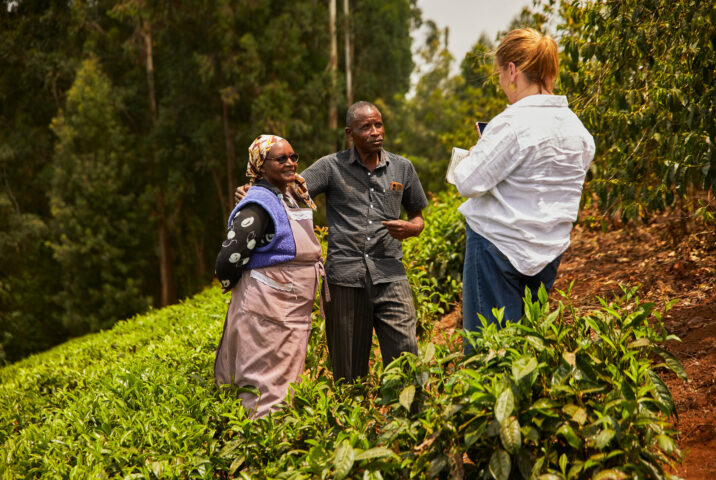Kiamabara AA
Tangelo and blackcurrant, balanced by sweet almond nougat and black tea. Good structure and balance.
Kiambara is a washing station (or factory, as they are called in Kenya) located near Mt. Kenya National Park and the town of Kabare, in Kenya’s Nyeri County. Established in 1995, it is one of two active washing stations – along with its sister factory Gatina – owned by the Mugaga Coffee Farmers’ Cooperative Society (FCS).
Kiambara receives coffee cherries from 910 of the cooperative’s members, who grow coffee trees on nearby farms, located between 1,600 – 1,900 meters above sea level. Farmers who deliver to Kiambara have on average of around a quarter of a hectare of coffee (around 200 trees), and grow the crop alongside macadamias, bananas, maize and beans.
Once harvested, coffee cherries are delivered to Kiambara, where they are processed and dried under the management of John Gichuki, ahead of dried parchment being transported to Nairobi for milling and sale (either directly or through the auction system). The factory sits at 1,600m above sea level, on the slopes of Mt. Kenya, and is located near the Kingu river. Fresh, clean water is pumped from Kingu to process coffee, contributing to its exceptional quality.
ABOUT MUGAGA FARMERS’ COOPERATIVE SOCIETY
Mugaga was originally part of a much larger society called Mathira. This society was split up into smaller cooperatives, including Mugaga. The cooperative has two washing stations: Kiambara and Gatina. Mugaga supports its farmer members by helping them access training and resources to improve productivity and quality.
ABOUT NYERI
Nyeri County is part of Kenya’s former Central Province, which was dissolved in 2013. The area includes Murang’a, Nyeri, Kirinyaga, Kiambu and Nyandarua Counties, and is traditionally the homeland of people of Kikiyu ethnicity. The central highlands of Kenya are considered to be one of the wealthiest areas of the country, due to the incredibly fertile land, geographical proximity to the capital, Nairobi, and close integration with the country’s colonial administration before Kenya gained independence in 1962. This integration afforded the communities of Central Kenya with opportunities for education, business and political prowess, despite the various injustices of the colonial government. The Kikiyu people have a long and proud history of agriculture and the region is farmed intensively, with coffee, tea and dairy being the most important modern crops.
The coffees in this lot are grown on the foothills of the extinct volcano, Mt Kenya, in an area defined by its bright red, nutrient-rich, volcanic soil, high elevations and cool climate, all of which contribute to the outstanding quality of coffees produced here. Most farmers in Nyeri are smallholder cooperative members – with farm size averaging just half a hectare – and grow coffee as a cash crop alongside food crops like banana, maize, macadamia, avocados and vegetables. Tea and dairy are also important sources of income for the producers.
Many of the producers in the region are second-generation landholders, whose parents purchased and planted the land. Most coffee farms in Nyeri were planted in the 1950s, after agricultural reform allowed for small Kenyan farmers to produce cash crops on their family farms (instead of only on large, British owned estates). At that time, it was recommended to plant SL-28 and SL-34, which remain the predominant varieties found in the area. Both cultivars have Bourbon and Moka heritage and are named after the laboratory that promoted their wider distribution in Kenya during the early 20th Century: Scott Laboratories. This lot also contains a small percentage of the hybrid variety Ruiru 11, which is popular with farmers as it is a more robust variety, with better resistance to Coffee Berry Disease and Coffee Leaf Rust.
GRADING
Kenya uses a grading system for all its exportable coffee lots. The grading system is based on the size and assumed quality of the bean. A coffee’s grade is directly correlated with the price it attracts at auction or through direct trade.
This lot is graded as an AA. This grade relates to the size (in this case, AA means that the beans are screen size 18 and above). More AA grade coffee is found in Central Kenya than anywhere else in the country, thanks to the high elevations which allow for greater late yields. These later yield cherries have the benefit of better weather, with optimum sunshine and a longer period for the sugars to develop and when they are finally picked, they are typically fuller, redder and heavier than cherries grown in other areas.
HOW THIS COFFEE WAS PROCESSED
All the coffee cherry is hand-picked and delivered on the same day to the washing station, where it undergoes meticulous sorting. This is also done by hand and is overseen by a ‘cherry clerk’ who ensures any unripe and damaged cherries are removed. The ripe cherry is then weighed and recorded, and the farmer receives a receipt of delivery.
The coffee is then placed in a receiving tank and pulped using a three-disc pulping machine to remove the skin and fruit from the inner parchment layer that protects the green coffee bean. After being pulped, the coffee is sorted by weight using water, with the highest quality and densest beans being separated out from the lighter, lower-quality beans.
The coffee is then dry fermented overnight, to break down the sugars and remove the mucilage (sticky fruit covering) from the outside of the beans. Whilst the coffee is fermenting it is checked intermittently and when it is ready it is rinsed and removed from the tanks and placed in a washing channel.
The parchment-covered coffee is then washed with fresh water from the nearby Kingu River and sent through water channels for grading by weight. The heavier coffee, which sinks, is considered the higher quality, sweeter coffee, and any lighter density or lower grade coffee beans are removed. The beans are then sent to soaking tanks where they sit underwater for a further 24 hours. This process increases the proteins and amino acids, which in turn heightens the complexity of the acidity.
After soaking, the coffee is pumped onto deep drying beds where they drain for 1-2 hours, before being transferred to raised drying tables (also known as African beds). As they dry the parchment is turned constantly to ensure even drying, and so that any defective beans can be identified removed. Time on the drying tables depends on the weather, ambient temperature and processing volume: taking anywhere from one to two weeks to get to the target moisture of 11–12%. After drying the coffee is moved to conditioning beds, where it rests in parchment for about a month. This resting period helps to stabilise water activity and contributes to long-lasting quality and vibrancy in the cup.
WHY WE LOVE IT
Coffees from Embu are recognised for their bright, juicy acidity and “classic” Kenyan flavours of blackcurrant and lime. We think this lot represents the best of Embu, as it is well-structured and balanced, with great tangelo and blackcurrant in the cup.
